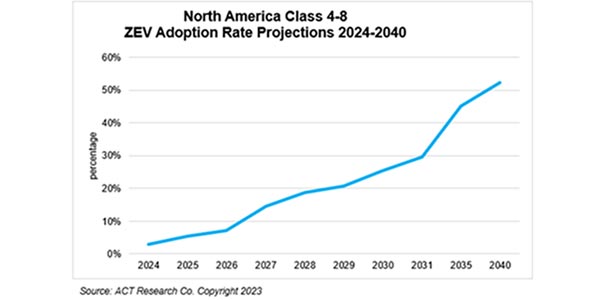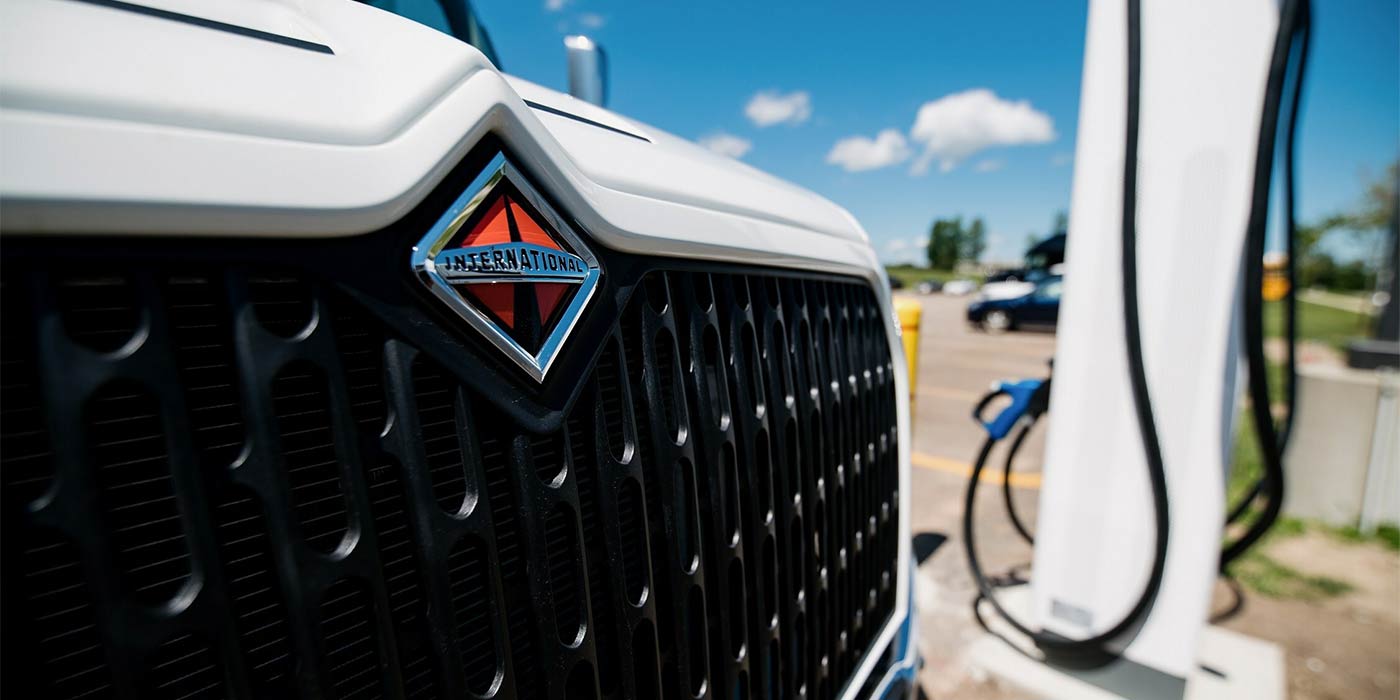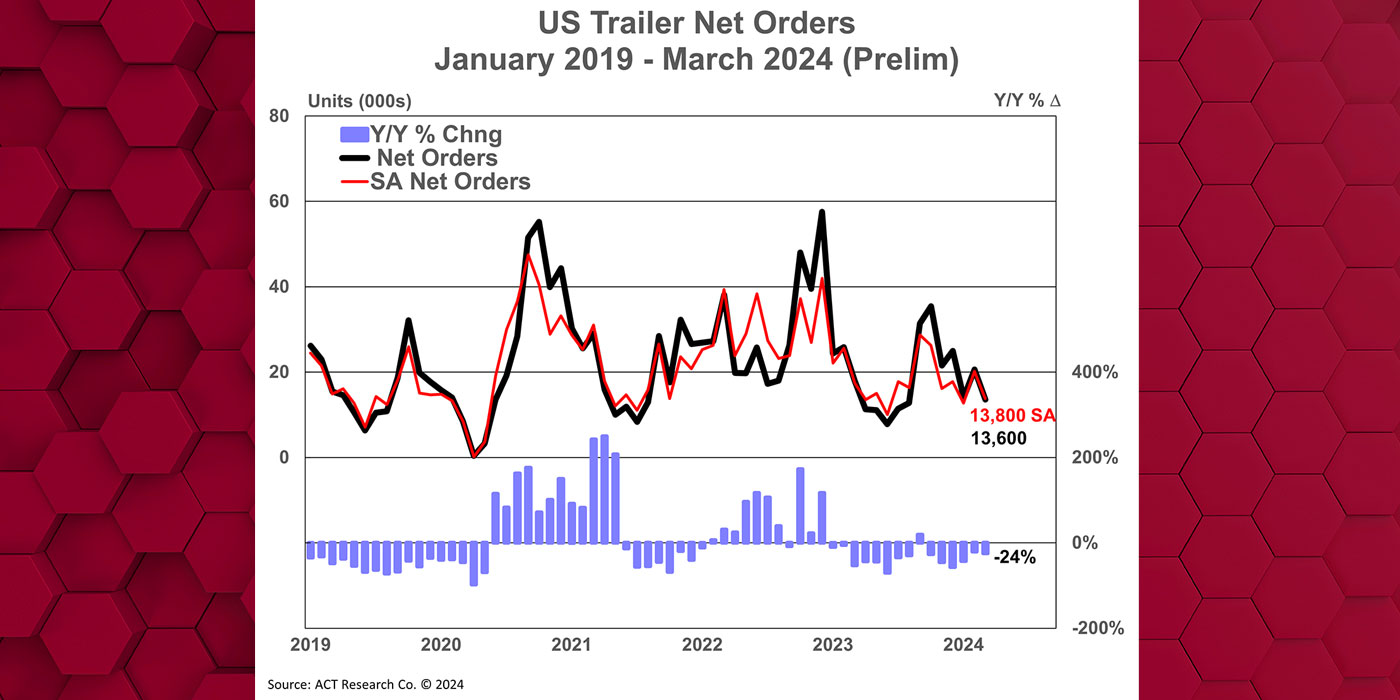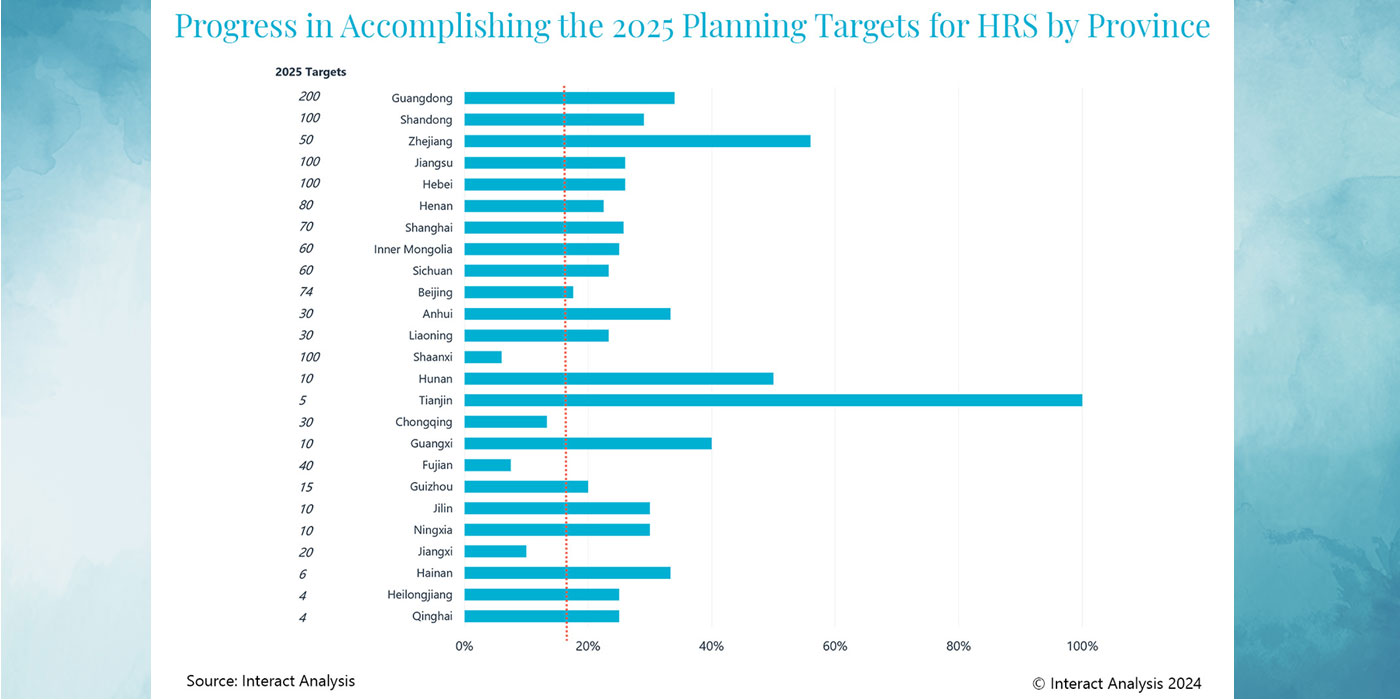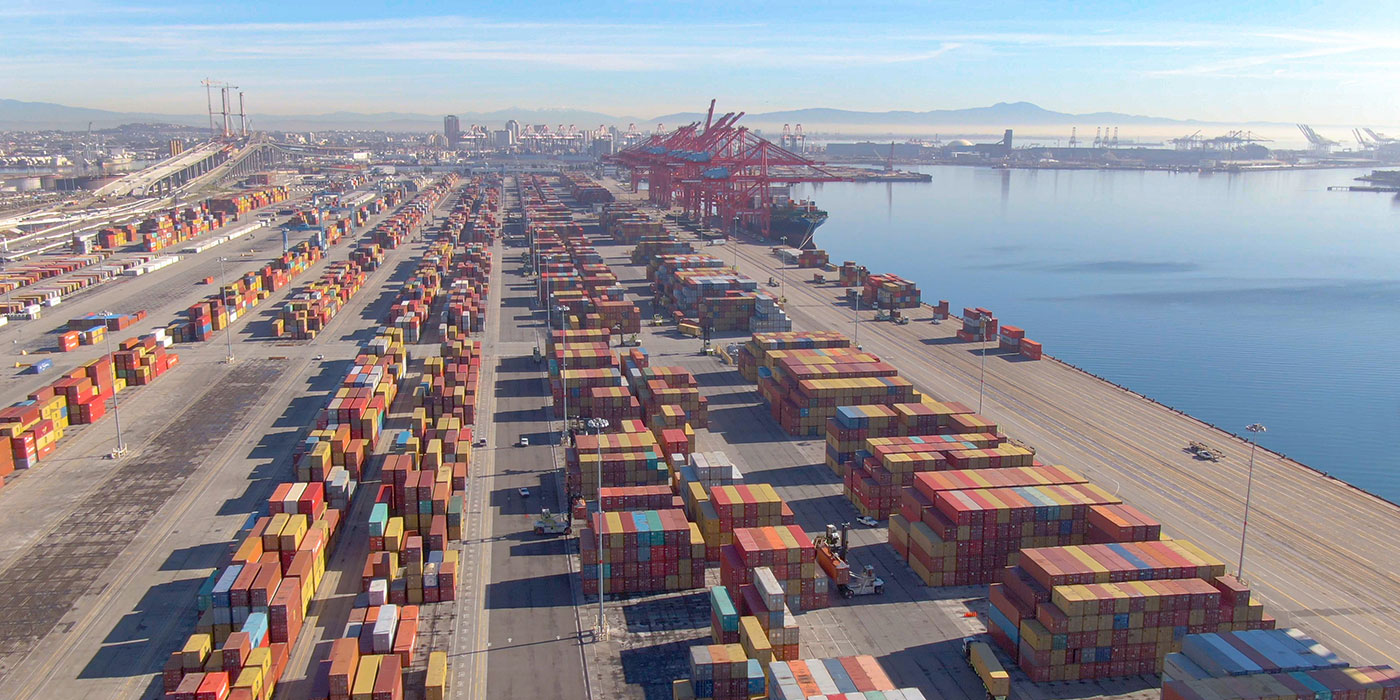According to ACT Research’s recently released edition of its Charging Forward study, the adoption rates for zero-emission and decarbonization vehicles will reach 25% by 2030 and 50% by 2040. The study notes that regulations are a key factor in the earlier years, particularly for higher GVW applications, while many lower GVW applications already provide a better total cost of ownership (TCO) today.
“We forecast a relatively low adoption rate from 2024 through 2026, reflecting the fact that BEV sales of commercial vehicles are still in their early years,” noted Ann Rundle, vice president of electrification and autonomy at ACT Research. “This begins to change in 2027, in part due to the cost increases for diesels because of the increased stringency of U.S. EPA’s 2027 low-NOx regulations. In addition, by 2027, eight states will have joined California in adopting Advanced Clean Trucks, resulting in moderate growth in adoption rates.”
By 2030 ACT Research is forecasting 25% adoption rates, as by then the remaining nine states that signed the MOU to adopt CARB Advanced Clean Trucks will have enacted those regulations. Additionally, it is assumed by the study that improved battery technology will negate battery replacement costs, and charging infrastructure utilization will significantly increase, decreasing those costs in the TCO.
Rundle concluded, “By 2040 we are forecasting that adoption of ZEVs will account for just slightly above 50%—essentially half of all CVs will be zero emissions, primarily BEVs.”

